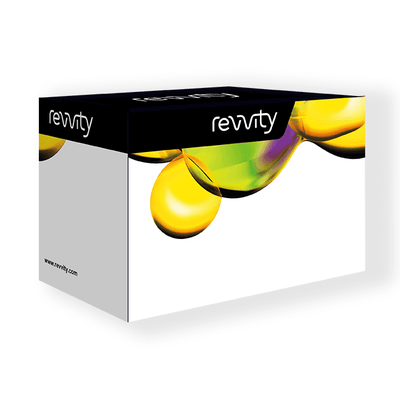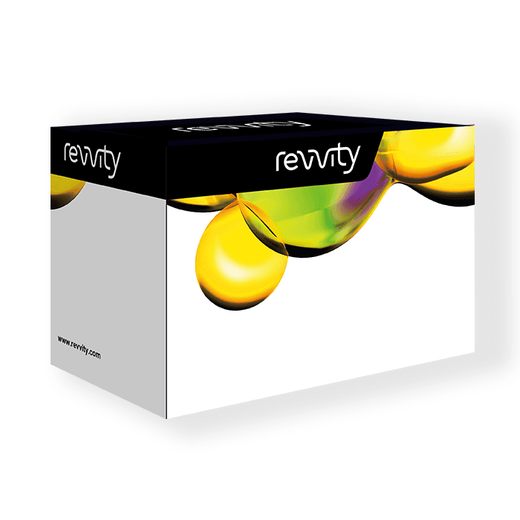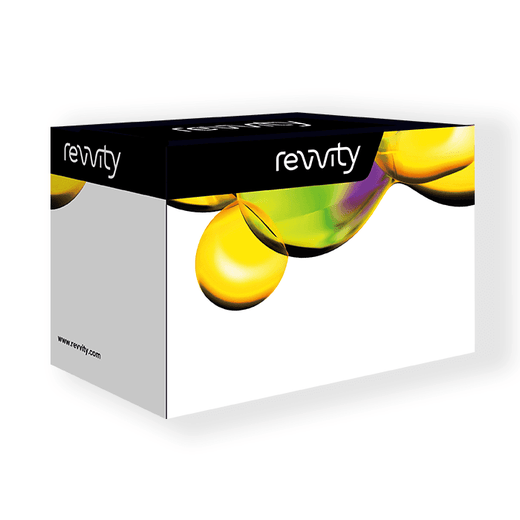

HTRF Human & Mouse Total β-Arrestin 2 Detection Kit, 20,000 Assay Points


HTRF Human & Mouse Total β-Arrestin 2 Detection Kit, 20,000 Assay Points






The Total Beta-arrestin 2 kit enables the cell-based quantitative detection of beta-arrestin 2, for monitoring GPCR activity.
For research use only. Not for use in diagnostic procedures. All products to be used in accordance with applicable laws and regulations including without limitation, consumption and disposal requirements under European REACH regulations (EC 1907/2006).
| Feature | Specification |
|---|---|
| Application | Protein Quantification |
| Sample Volume | 16 µL |
The Total Beta-arrestin 2 kit enables the cell-based quantitative detection of beta-arrestin 2, for monitoring GPCR activity.
For research use only. Not for use in diagnostic procedures. All products to be used in accordance with applicable laws and regulations including without limitation, consumption and disposal requirements under European REACH regulations (EC 1907/2006).



HTRF Human & Mouse Total β-Arrestin 2 Detection Kit, 20,000 Assay Points



HTRF Human & Mouse Total β-Arrestin 2 Detection Kit, 20,000 Assay Points



Product information
Overview
The Total B-arrestin 2 r assay monitors total B-arrestin 2, and is used to detect the expression of endogenous or overexpressed B-arrestin 2 ous cells. B-arrestin 2 p;members of the n/beta-arrestin protein family, and wn to be implicated in the -mediated desensitization of G-protein-coupled receptors, and to cause specific dampening of cellular responses to stimuli such as hormones, neurotransmitters, or sensory signals. As B-arrestin 2 is expressed in various tissues, it is believed that B-arrestin 2 may play a major role in many cancers or other human diseases (diabetes) by ing receptor-mediated ns.
Specifications
| Application |
Protein Quantification
|
|---|---|
| Brand |
HTRF
|
| Detection Modality |
HTRF
|
| Molecular Modification |
Total
|
| Product Group |
Kit
|
| Sample Volume |
16 µL
|
| Shipping Conditions |
Shipped in Dry Ice
|
| Target Class |
GPCR
|
| Target Species |
Human
Mouse
|
| Technology |
TR-FRET
|
| Therapeutic Area |
Cardiovascular
Inflammation
Metabolism/Diabetes
NASH/Fibrosis
|
| Unit Size |
20,000 Assay Points
|
Video gallery

HTRF Human & Mouse Total β-Arrestin 2 Detection Kit, 20,000 Assay Points

HTRF Human & Mouse Total β-Arrestin 2 Detection Kit, 20,000 Assay Points

How it works
Total B-arrestin 2 assay principle
The Total B-arrestin 2 assay quantifies the expression level of B-arrestin 2 in a cell lysate. Unlike Western Blot, the assay is entirely plate-based and does not require gels, electrophoresis, or transfer. The assay uses two labeled antibodies: One coupled to a donor fluorophore, the other to an acceptor. Both antibodies are highly specific for a distinct epitope on the protein. In the presence of B-arrestin 2 in a cell extract, the addition of these conjugates brings the donor fluorophore into close proximity with the acceptor and thereby generates a FRET signal. Its intensity is directly proportional to the concentration of the protein present in the sample, and provides a means of assessing the protein’s expression under a no-wash assay format.

Total B-arrestin 2 two-plate assay protocol
Detection of total B-arrestin 2 with HTRF reagents can be performed in a single plate used for culturing, stimulation, and lysis. No washing steps are required. This HTS designed protocol enables miniaturization while maintaining robust HTRF quality.

Total B-arrestin 2 one-plate assay protocol
Detection of total B-arrestin 2 with HTRF reagents can be performed in a single plate used for culturing, stimulation, and lysis. No washing steps are required. This HTS designed protocol enables miniaturization while maintaining robust HTRF quality.

Assay validation
HTRF total B-arrestin 2 assay compared to Western Blot
HEK293 cells were cultured in a T175 flask in complete culture medium at 37°C, 5% CO2. After 72h incubation, the cells were lysed with 3 mL of lysis buffer #4 (1X) for 30 minutes at RT under gentle shaking.
Serial dilutions of the cell lysate were performed using lysis buffer, and 13 µL of each dilution were transferred into a low volume white microplate before the addition of 3µL Lysis buffer + 4 µL of HTRF Total-B-arrestin 2 detection reagents. Equal amounts of lysates were used for a side by side comparison between HTRF and Western Blot.
The side by side comparison of Western Blot and HTRF demonstrates that the HTRF assay is 4-fold more sensitive than the Western Blot, at least under these experimental conditions.

Species compatibility of HTRF total B-arrestin 2 assay
Human (HEK293), Hamster (CHO-K1), and murine (C2C12) cells were plated at 100,000 cells/ well in a 96 well plate in cell culture medium, and incubated for 24h at 37°C, 5% CO2. Medium was then removed and cells were lysed with 50 µL of lysis buffer for 30min at RT under gentle shaking. 16 µL of lysate were transferred into a 384-well sv white microplate, and 4 µL of the HTRF Total B-arrestin 2 detection reagents were added. The HTRF signal was recorded after 3h incubation at room temperature.
Expression levels correlate well with data from literature and with qPCR experiments performed with the same cells as the HTRF assays.

Simplified pathway
Simplified pathway of GPCR signaling and role of B-arrestins
B-arrestins play central roles in the GPCR signaling pathways by regulating agonist-mediated GPCR signaling. Among B-arrestin implications, they mediate both receptor desensitization and resensitization processes, act as a signaling scaffold for MAPK pathways, such as MAPK1/3 or AKT1, and participate in the recruitment of the ubiquitin-protein ligase to the receptors. Beta-arrestins function as multivalent adapter proteins that can switch the GPCR from a G-protein signaling mode (that transmits short-lived signals from the plasma membrane) to a beta-arrestin signaling mode that transmits a distinct set of signals initiated as the receptor internalizes and transits the intracellular compartment.
During the GPCR desensitization process, B-arrestins bind to the GRK-phosphorylated receptor and sterically preclude its coupling to the G-protein.
B-arrestins target many receptors for internalization by acting as endocytic adapters, and recruit GPCRs into the adapter protein 2 complex 2 (AP-2) in clathrin-coated pits. Internalized arrestin-receptor complexes traffic to intracellular endosomes. Furthermore different modes of arrestin-mediated internalization occur, depending on the receptors and the cell types.
Receptor resensitization requires receptor-bound arrestin to be removed, so that the receptor can be dephosphorylated and returned to the plasma membrane.
The extent of beta-arrestin involvement appears to vary significantly, depending on the receptor, the agonist, and the cell type.

Resources
Are you looking for resources, click on the resource type to explore further.
Dive deeper into research on the GPCR signaling pathway
β-arrestins are intracellular proteins that play an important role in GPCR...
Improve your research on β-arrestin with HTRF™ technology
The β-arrestins 1 and 2 play a central role in GPCR signaling pathways by...
In this note, we cover the best practices and elements that can be monitored and tested to achieve an effective transfection with...


How can we help you?
We are here to answer your questions.






























